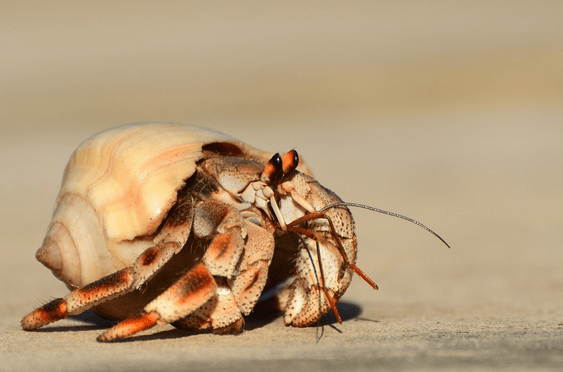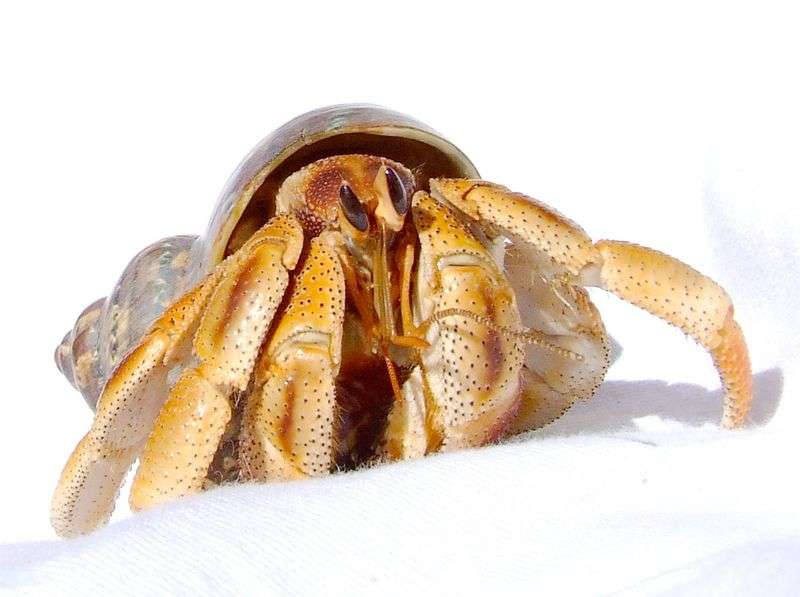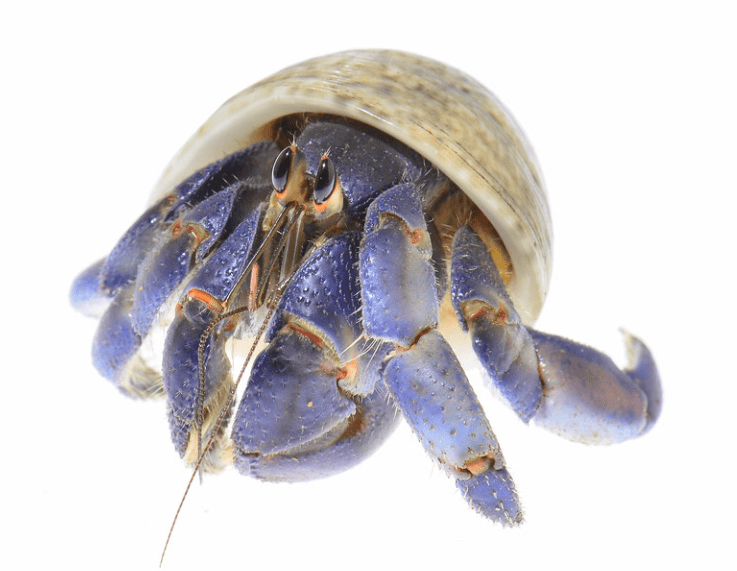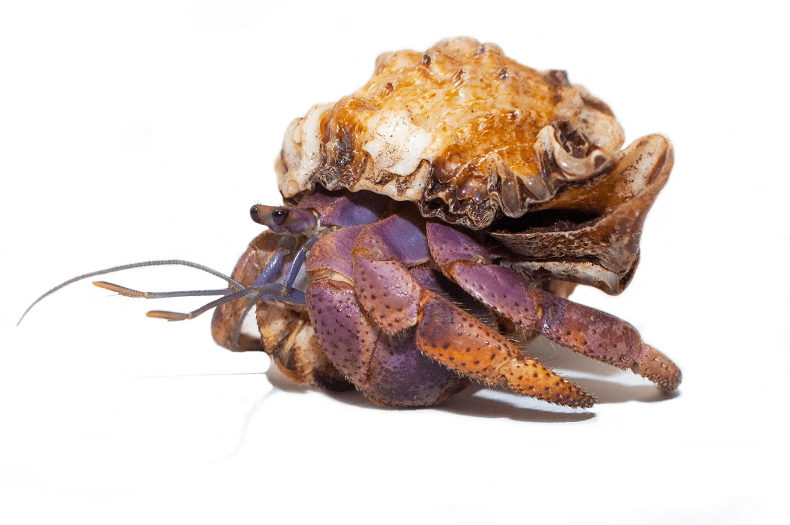
Description
A land hermit crab called Coenobita rugosus is comparatively small. Coenobita rugosus uses snail shells to cover its sensitive abdomen since, like the majority of hermit crab species, it lacks a complete exoskeleton. Chelae are used by these hermit crabs as lids to cover their shells.
Compared to their right chelae, the left chelae are bigger. It has four sides as well. There are seven distinct striations (ridges or stitch marks) on the left chelae. The colour is darker on the outside. Both chelae have a bristly brush on their inner dorsal edges. The right chelae are elongated and nearly triangular in form. An ‘O’-shaped dark feature can be seen on the carapace. The abdomen is narrow and not very long.
The second antenna pair has a grey or orange tip and a yellow or orange base. Long and extended, the eyes might be brown or even black in colour. The eyestalks are non-cylindrical and laterally compressed. They typically have a yellow-brown or sand colour. The area directly in front of the eyes narrows. The last set of walking legs are flattened (like a sword) and thin; the second segment’s colour is lighter.
Distribution
Coenobita rugosus is thought to have come from Nias Island in the Indian Ocean. These days, this species can be found all across the Indo-Pacific Ocean.
The Philippines, Malaysia, Taiwan, Indonesia, China, Sri Lanka, Japan, Madagascar, India, the Seychelles (Aldabra Atoll), Christmas Island, the continental coast of East Africa (Tanzania, Somalia (Sar Uanle), Kenya, northern Mozambique (Quirirnba Island), etc.), French Polynesia, etc. are all places where you can find terrestrial hermit crabs.
Behavior
The terrestrial hermit crab Coenobita rugosus is natively nocturnal and exhibits nocturnal behaviors. Although they might still be somewhat active during the day, their true peak activity is from nightfall until just before daybreak. When food supply is at its peak during low tide, this nocturnal behavior is primarily motivated by an effort to escape visual predators as well as dehydration. They frequently take cover under trash or in cracks throughout the day.
Coenobita rugosus is a species that moderately burrows. They typically dig burrows in the wild to stave off predators and thirst. They can dig tunnels in damp sand, between roots and stones, or under detritus.

Keeping as Pet
Tank Size (Enclosure):
Although these hermit crabs are little, they still need room to move around. Therefore, a 5-gallon (about 20 litre) tank is the smallest capacity that is advised for keeping one Ruggie.
Larger tanks are always preferred. You will also have extra room in larger tanks to allow for the addition of proper environmental enrichment. As a result, I would advise starting with a 10-gallon (or 40-liter) tank.
Water:
Coenobita rugosus tend to congregate around freshwater sources rather than saltwater sources. Their water management is based on an equilibrium that is kept by a subtle manner of environmental uptake as well as the pressure of constant, intense evaporation. In order to provide these hermit crabs with a suitable environment in captivity, both freshwater and saltwater must be present.
Give them a bowl of freshwater and a bowl of saltwater.
In most cases, your hermit crab can be submerged entirely in water as long as it has a safe route to escape (such as pebbles, a plastic mesh, etc.). No need to construct enormous pools! Except to lay their eggs, they seldom ever come into contact with water in the wild.
Temperature:
Crabs of the species Coenobita rugosus have cold blood. Their body temperature changes according to the ambient temperature. They cannot control their thermal balance, which implies they must rely on an outside source of heat.
Most often, a temperature range of 75 – 82°F (24 – 28°C) is advised. They do prefer warm weather.
Humidity:
The abdominal lung of Coenobita rugosus is tailored to their terrestrial lifestyle. They therefore require wet, moist air to breathe. There should be more than 70% humidity in the air. The ideal range would always be between 80 and 90%.
Diet:
Approximately 10% of the food should consist of meat-based diets, while the other 90% should be vegetables. Coenobita rugosus generally appears to have an unselective diet. Hermit crabs, however, can individually communicate their preferences for food. Additionally, they frequently change their behavior when eating strange foods. To stay healthy, they also need nutrients like calcium, carotene, astaxanthin, and even antioxidants. Thus, variety in eating is essential. Foods like maize, carrots (which provide the carotene also required to keep their colour), leafy vegetables, spinach, oak leaves, tree bark, nuts and seeds, bananas, broccoli, squash, etc. are all readily consumed by Coenobita rugosus.
Table





